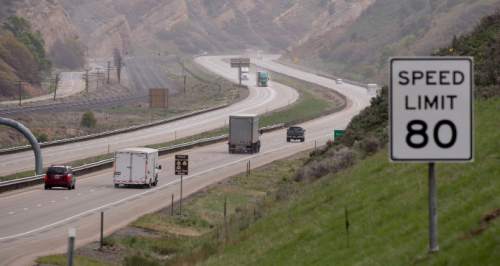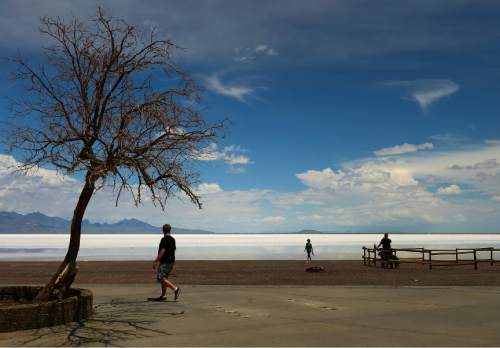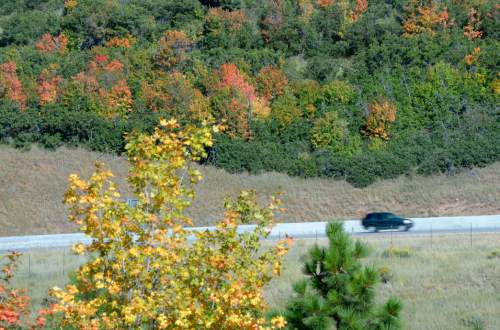This is an archived article that was published on sltrib.com in 2016, and information in the article may be outdated. It is provided only for personal research purposes and may not be reprinted.
When Lynette Hales' contractions began 10 weeks prematurely during a 2013 weekend getaway to Wendover, a co-worker broke the speed limit trying to race her to a hospital.
But there was more than 100 miles of desert between them and the nearest one, in Tooele. As the co-worker zipped along Interstate 80, a dispatcher warned over the phone that they were "getting to the middle of nowhere."
Before they could reach the hospital, the co-worker pulled off by the salt flats, and Hales' twins entered the world on the side of the road. Though the twins were far from civilization, they are far from alone in their remote births.
From 2010 through 2015, more than 75 babies have been born on Utah roadsides. Most of them happened in Salt Lake County (the state's most populous), which has had 24 roadside births since 2010, according to numbers released to The Salt Lake Tribune by the Utah Office of Vital Records and Statistics. One of the most recent was Dec. 12, when a 30-year-old woman's newborn girl entered the world on the side of Interstate 15 in Sandy, while her husband was on the phone with a dispatcher.
Tooele County has had the second most births, with 16. The rural county has outpaced more populous counties such as Utah, which has had nine; Davis and Washington, which have had six each; and Weber, with five.
Utah's roadside-babies picture is incomplete — only 11 of the state's 29 counties report such statistics to the vital records office — but Tooele County's prominence is telling.
I-80, which cuts west-to-east across the county from Nevada to Salt Lake County, is as long a highway as it is lonely. Starting from the Nevada line and heading east, the freeway is devoid of hospitals until Tooele, which is more than 100 miles away.
"It's just that vast expanse," Utah Highway Patrol Sgt. Todd Royce said. "Someone is [thinking], 'OK, I'm in labor, I can make it to my doctor in Tooele,' or something like that, and they don't."
Similarly, help with early labor can be far away along the 123-mile stretch of Interstate 70 from Richfield to Green River, which runs through the Manti-La Sal National Forest and the eastern desert, Royce said. However, those counties — Sevier and Emery — don't report such births to the vital records office.
With all of the tragedy that troopers see on the road, Royce noted that helping a new life is uplifting. Some troopers who have helped with a mom's labor have even formed lasting bonds with the family.
Royce has yet to assist in one himself, but all troopers are trained for the possibility.
Howard Sharp, chief of University of Utah Health Care's general obstetrics and gynecology division, has had a few patients through the years give birth before reaching the hospital. Typically when that happens, the baby isn't the mother's first.
"The first labor experience was usually a long, drawn-out process. And then [by the second pregnancy], they may choose to wait at home a little bit, because they don't want to have to lie in a hospital bed for hours and hours," Sharp said. And while they put off going to the hospital, the second baby arrives quicker than expected.
When a roadside delivery does happen, Sharp advises people to remember to pull off to the side of the road, turn on the hazard lights and call 911.
"The worst thing would be for a car to be rear-ended by another vehicle," Sharp said. If the mother can get into the back seat, that provides more room, but Sharp has had patients who could not possibly move from the front seat and delivered there.
In addition to roadside deliveries, the vital records office also lists births that occurred in a moving vehicle, such as a personal car or ambulance, that didn't pull over and stop for the baby's arrival. Including those, Tooele County's total rises to 19 since 2010, and Salt Lake County's jumps to 35.
Due to privacy laws, the vital records office's stats do not list the births' locations more specifically than the counties where they occurred.
Twitter: @MikeyPanda







